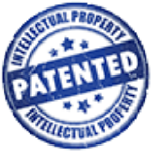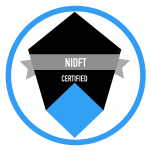Which Mold is the Most Dangerous?
We often encounter customers that ask us, “Is this a dangerous mold?” or, “What type of mold is the most dangerous?”. The short answer is practically all molds in elevated amounts can be dangerous.
The most dangerous molds or what we call Marker Molds, include Stachybotrys and Chaetomium. Other molds that can be equally as dangerous depending on the environment are Penicillium, Aspergillus, Fusarium, and Cladosporium.
Stachybotrys is commonly called black mold and produces a mycotoxin called Trichothecene. Trichothecene or T2 is the precise toxin used in bio-warfare for nerve gas. It is not to be toyed with on any level.
Chaetomium can produce several mycotoxins, including sterigmatocystin, O-methylsterigmatocystin, chaetochromin, chaetocin, chetomin, cochliodinols, and mollicellin G. Many of these compounds have been reported to have teratogenic and carcinogenic effects.
Other molds produce:
- Aflatoxins (produced by Aspergillus) including Aflatoxin B1, B2, G1, G2, M1, and M2
- Ochratoxin – including Ochratoxin A, B, and C
- Fumonisins – including Fumonisin B1 and B2 and Zearalenone
Mold spores out when stressed. Additionally, mold produces dangerous mycotoxins. Spores can affect a person’s respiratory tract, cause asthma, headaches, rashes, etc. The mycotoxins that are a byproduct of mold can also cause neurological issues including depression, anxiety, weight gain, weight loss, headaches, brain fog, fatigue, muscle weakness, pain, tingling, etc.
Do all molds cause these? Probably not, but a good portion does. Our recommendation is to treat all mold as a serious problem. If you have obvious mold, regardless of type, you need to address the issue.
Addressing the mycotoxins is altogether different. Mycotoxins are not a living cell or spore. Therefore “killing” a mycotoxin is not possible. They are not alive. However, by eliminating the production of mycotoxins, as well as oxidizing the proteins within the toxin, a home receiving the Pure Maintenance treatment can be returned to a healthy status.
A home with elevated levels of Stachybotrys, Chaetomium, Aspergillus, and others seem to have one thing in common; they are present in homes that have had or are currently experiencing humidity issues, water issues, and ventilation issues. The overall “mold load” in the home needs to be addressed. The beauty of the Pure Maintenance dry fog treatment is that it addresses ALL mold and ALL bacteria in a home. Get your home treated whenever you suspect elevated “mold load” in your home.
The following peer-reviewed writings are a tiny fraction of the overall information regarding Trichothecene. These include effects on the blood-brain barrier, neurological effects, immunological effects, and intestinal effects.
Weidner Maria, Husel Sabine, Ebert Franziska, Schwerte Tanja, Galla Hans-Joachim J, Sumpf Hans-Ulrich U..Influence of T-2 and HT-2 on the blood-brain barrier vitro. New experimental hints for neurotoxic effects.
Other Neurological effects studies include Doi Kunio, Otsuka koji, Mechanisms of mycotoxin-induced Neurotoxicity through Oxidative stress
Immune effects Kankkunen Pain, Valimaki Elina, Rintahaka Johanna, et al. Trichothecene mycotoxins activate NLRP3 Inflammasome through P2X7 receptor and SRC tyrosine kinase-dependent pathway
US Army Corps of Engineers Tests Our System

Learn how our unique dry fog system stood up to the rigorous tests put forth by the US Army Corps of Engineers






